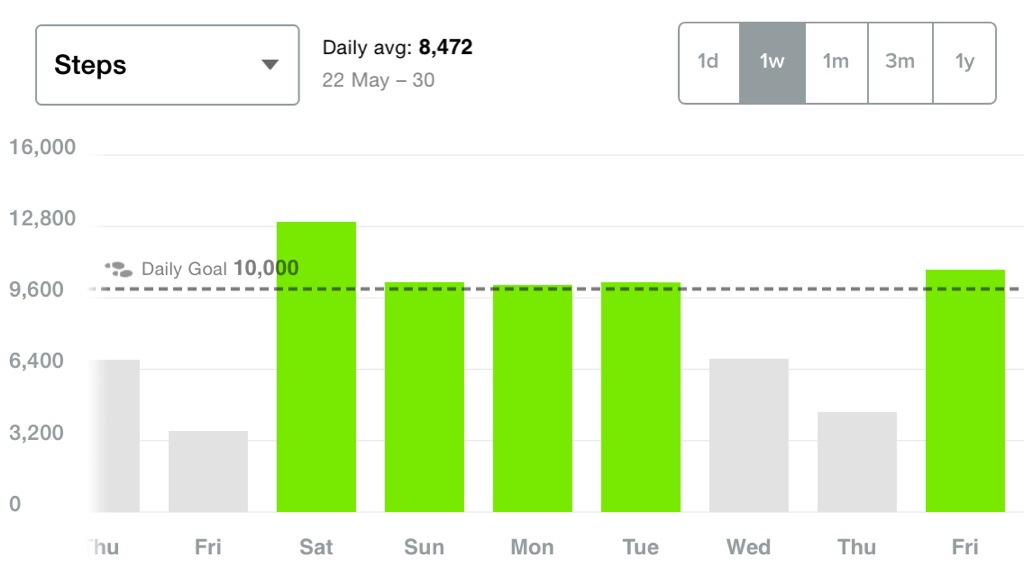Since 26 October 2013, I have been using a Fitbit Zip tracker. You may see from time to time nowadays a daily tweet:
My fitbit #Fitstats_AU for 5/30/2014: 10,839 steps and 7.6 km traveled. http://t.co/FswmAdMBko Nic Lee (@niclee17) May 31, 2014
Fitbit is part of this trend that seems to be gaining traction in the last year or so, where health and fitness are becoming more mainstream. Indeed, the popularity of Fitbit devices as Christmas gifts in 2013 may have helped in part for this market/industry to become what it is today.
Fitbit is not just a pedometer/tracker, be it a Zip, Flex, One or Ultra. Fitbit has been developing their own little ecosystem since 2007, with smartphone apps, website dashboard reporting, services and supported by a network of affiliates. The increasing awareness and need to live healthy lives fuels the demand for Fitbit. Online communities have developed over time, with integrated access via Facebook. That, in part, has helped the profile and brand of Fitbit. Fitbit grew in a big way in 2012, when it launched new devices fuelling the first wave of customer growth. Today, it continues to mature its portfolio via the API and services side to their portfolio.
For users of Fitbit, tracking our physical activity helps us monitor and measure whether we are getting enough exercise on a daily basis. I have a daily goal of 10,000 steps / 2700 calories / 8 km / 30 min of vigorous activity. Given my office-based work lifestyle, I have to make a concerted effort to meet these daily goals. On average, a normal day in the office will see me easily achieve 5,000-6,000 steps. When I walk around the city, I should expect to reach 10,000 steps. For example, once a week I drive into work so that after my evening study group, I can get home quickly without having to worry about the 30-min interval that evening trains suffer from. As a result, I park at Federation Square, which is half-way across the CBD from both office locations. Thus, not only is Federation Square a convenient car park location (directly accessible to Batman Avenue and Monash Freeway), but it also is strategically located to encourage me to walk across town. After a day’s work, close to 5pm, I walk to the car, swap bags and head on to the study group. This arrangement ensures that I comfortably reach my 10,000 steps.
You can see by last week of walking as tracked in the graph below:
It goes without saying that my analytical mindset takes to the statistical analysis available through the Fitbit reporting mechanisms. The concept of badges follows trophy/achievements found in games. Indeed, to treat walking like a game is half the fun!
The badges above reflect my achievements to date, and they also help to motivate and direct towards the next level.
[table “” not found /][table “” not found /]
*Note: My first Fitbit device was lost on 14 December and it was not until Christmas (26 December) when I started using my replacement Christmas present Zip device.
Based on the analysis of the number of days it takes to cover a block of 250km, this latest milestone of 1000km confirms the previous emerging trend of an increased distance covered per day.
I hope I can sustain this trend, particularly given the cold Winter season is upon us now. Over the months, there have been the odd occasion where I have forgotten to wear the Fitbit for the day, and I have had to log manually walking steps after – but nowadays it is part of my routine. This is reflected in the log of activity entered – a total of seven times when I have neglected to attach the Zip device to my pants pocket. I wear the tracker all the time, except in bed. It monitors all activity I do, including household chores.
Some observations I have captured of my own lifestyle and walking:
- Walking across town from Federation Square to the office is approximately 1km / 1000 steps.
- Sunday’s at church – if I’m involved in worship and move around during service will cover about 2.5km / 2500 steps, whereas attending a service and remaining seated for its duration will see the tracker barely get over 0.5km/500 steps.
- A walk around my previous office building floor (the layout allowed me to lap the floor) was about 400m/400 steps.
- Working on client site/offices has more space so when I was based at my consulting firm’s office, I had to make a much bigger effort to clock up steps. During this period (January) I took to walking from Parliament station to the office in the morning – which was similar to the 1.5km across town trek I currently do.
The Fitbit definitely makes me more health conscious and mindful of getting enough daily exercise. During the summer months it is much easier to walk outside and meet the 10,000 daily steps. As Winter weather continues to grow, the challenge will be to find alternate ways of maintaining, yet alone pushing new targets/milestones.
In the current analysis, I have focused more on steps and distance. However, just as important is the metric on duration of intense activity (Very Active Minutes). For this measure, in order to achieve a weight-loss outcome, the daily target is 30 min. As an example, walking to work for today has translated into 11 minutes of active walking. Not all walking counts to this measure – steady regular-paced walking clearly does not count! My performance against this metric can be summed up as erratic. Generally, I meet this daily target half the time, but when I do I can exceed the 30 min duration very easily. My record for the past three full weeks:
[table “” not found /]
Generally, you can see that my office lifestyle makes me naturally less active. Unless I have made a concerted effort (walk across town, or walks with Dad), I would struggle to meet the 10,000 daily step target/30 minutes of intense activity.
It is said that the first step to addressing problems is to first be aware of them. Fitbit thus allows me to measure my performance and give me this data to analyse. The rest is up to me… so I guess I will have to make a conscious effort to walk rather than stand on an escalator/lift. A quick trip downstairs to get my coffee seems to indicate an additional 900 steps. Unfortunately, once I navigated my way down the stairwell, I discovered the door to the street-level lane-way was uni-directional! Clearly, the security concerns override individual health efforts of traversing upstairs…
Whilst we can focus on exercise and expend our energy, it has been recognised by media and academic research that the most effective way to reduce weight and be healthy is to monitor and control our food intake. Ensuring a health and balanced diet can be facilitated by the Fitbit online/smartphone app capability to log calories consumed. Personally, whilst I explored this capability during the first few days of operation, I have found it difficult to adopt and integrated into my lifestyle – primarily because the catalogue/database of foods available to pick are derived from US-centric food retailers and the diverse local cuisine I eat makes the data entry a time consuming process.
In concluding this article, it has also been my observation that the Fitbit system offers greater levels of social connectivity, in that we can connect to Facebook friends and create a fun competitive environment where we can see how we fare in meeting our goals and draw comparisons. However, whilst I am connected to one friend (user adoption amongst immediate friends is low), fitness and health is an intensely personal endeavour, so trying to compare ourselves can only be limited to how well we individually meet and succeed at our own personally-set goals.
Thanks for reading!


1 comment
Comments are closed.